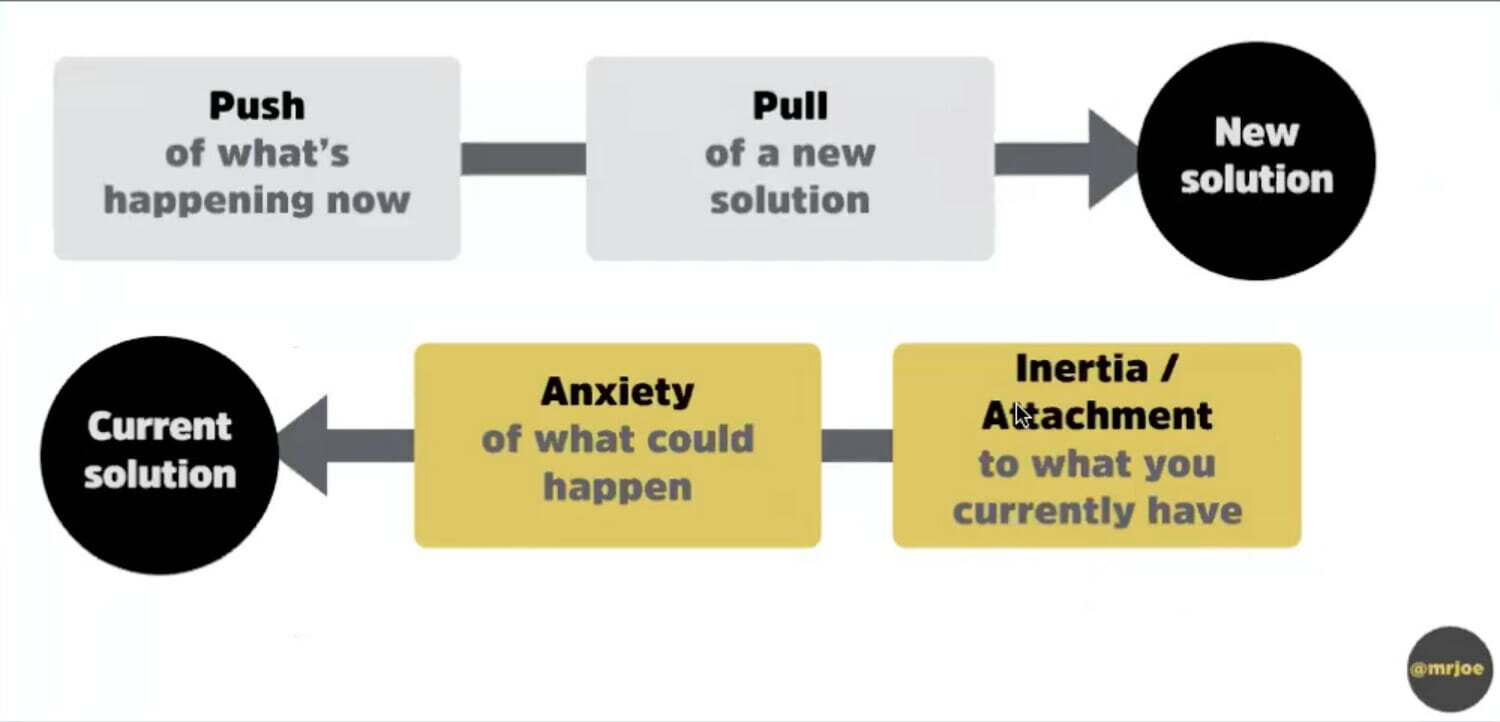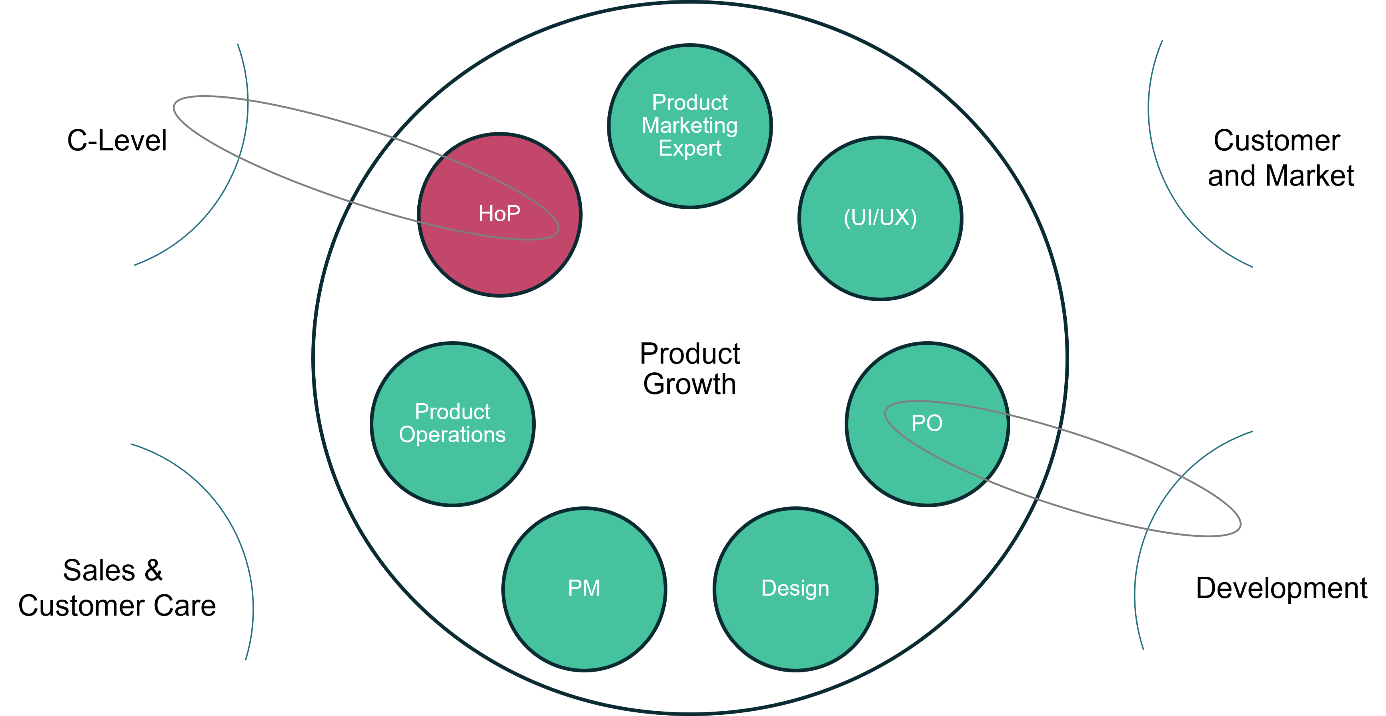To succeed in today's fast and competitive business world, organizations should aim for excellent products consistently. One way to achieve this is by using a maturity model, which provides a roadmap for assessing and improving the maturity level of a product organization. By following the stages and characteristics in this model, companies can determine their current position, identify strengths and weaknesses, and develop strategies to level up their product practices.
Why product maturity matters
Having a mature product organization is essential for business success and sustainability. A mature product organization puts in place strong processes, strategies, and structures to achieve this success. It aligns the product vision with the company's goals, provides value to customers, and encourages innovation. In addition, a mature product organization promotes effective collaboration across functions, uses market and customer insights, and attracts and retains talented employees. Assessing the maturity level of your product organization can provide useful information about your organization's abilities and help you plan a path toward ongoing business and product success.
Introducing the Product Maturity Model Framework
The suggested maturity model has four different levels: 🌱Enabling, 🌟Established, 🚀Company Leading, and 🌍Market Leading. Each level shows a different stage of growth and maturity and has its own unique characteristics and challenges. Let's explore each level further.
🌱Enabling product organization
At the Enabling maturity level, businesses are beginning to understand how essential it is and are endeavoring to build a foundation for their organization that revolves around products. Product managers haven't been appointed yet at this stage, and there's still confusion regarding what responsibilities they should have.
Some characteristics of an organization at the Enabling maturity level include:
- The product organization is not consulted in developing the business plan or go-to-market strategy
- Market and customer intimacy is low, and the product organization sporadically interacts with the market and customers
- Product vision does not exist or is not well-defined
- The product roadmap, as well as product requirements, are driven by non-product functions
- The product organization is not considered a major stakeholder in organizational processes, and stakeholder intimacy is low
- Product delivery planning is not considered or is driven by capacity and execution functions
- Usually, few senior and principal PMs exist, if any
The challenges an organization at the Enabling maturity level may face include:
- Lack of clarity and definition around the role of product functions, leading to confusion and inefficiencies in the product development process
- Difficulty in aligning product strategy with business strategy due to lack of coordination between the product organization and other functions
- Limited market and customer understanding, resulting in products that don't meet customer needs or solve market problems effectively
- Pricing decisions that don't reflect the value of the product to customers, potentially leading to low adoption rates and revenue
- Insufficient investment in product practice and insufficient recognition of its value to the organization, potentially result in difficulties in attracting and retaining top talent in the product organization
To reach the next level of success, it's critical that your organization grasps the value of product practice and creates a product-focused environment. This could include constructing an unequivocal product vision, setting up a roadmap steered by product management, deepening market and client knowledge, involving product managers in forming the business plan and go-to-market strategy, as well as investing resources for assembling a talented team with experience in this industry.
🌟Established product organization
A company that has come to recognize the value of the product practice and integrated it as a key element in its product strategy and development is considered at the Established Maturity Level. The product organization becomes clearly established at this level, with solid integrative ties between all departments within an organization.
Some characteristics of an organization at the Established maturity level include:
- The product organization is consulted in developing the business plan and go-to-market strategy
- High market and customer intimacy, and the product organization constantly interacts with the market and customers
- Product vision exists and aligns with company strategy and the product roadmap is driven by the product organization, with product requirements solely led by the product organization
- Pricing strategy is tightly coupled with the product vision and based on value to customers
- The product organization is considered to be a major stakeholder in organizational processes with high stakeholder intimacy
- Product delivery planning is tightly aligned with the business plan and driven by product themes
- Some senior and principal PMs exist within the organization
The challenges an organization at the Established maturity level may face include:
- Maintaining alignment between product strategy and business strategy as the organization grows and evolves
- Ensuring that product requirements are based on a deep understanding of customer needs and the competitive landscape
- Continuously improving product delivery processes to increase speed and efficiency while maintaining quality
- Continuously monitoring and adapting pricing strategies to ensure that they remain competitive and reflect the value of the product to customers
- Developing and retaining top talent in the product organization
In order to achieve greater success, this organization should focus on improving its product practices, expanding and keeping its talent pool, prioritizing customer satisfaction and business goals, and taking a leadership role in promoting collaboration between departments and influencing executive decisions.
🚀 Company leading product organization
The Company Leading Maturity level is representative of a company that fully integrated product practices into its strategic processes. At this level, not only does the product organization serve as a strategic partner to the business, but they are pushing innovation forward by presenting both market power and thought-provoking concepts.
Some characteristics of an organization at the Company Leading maturity include:
- The product organization holds a significant role in the company, reporting to a business function and setting the business plan, go-to-market strategy, and product strategy
- The product organization regularly interacts with the market and customers
- Product vision aligns with the company strategy, the product roadmap is driven by the product organization, and product requirements are led solely by the product organization
- Pricing strategy is tightly coupled with the product vision and based on value to the customers
- Product delivery planning is driven by product themes and tightly aligns with the business plan
- Several senior and principal PMs exist within the organization
The challenges an organization at the Company Leading maturity level may face include:
- Maintaining focus on the product vision and strategy while balancing the needs and goals of other stakeholders in the organization
- Driving innovation and differentiation while staying competitive in the market
- Ensuring effective collaboration and communication across all functions of the company to drive success and achieve goals.
- Managing the complexity of product delivery and ensuring alignment with the business plan
To reach the pinnacle of Market Leading maturity, an organization must foster a customer-centric culture and increase their comprehension of individual customers' needs and behaviors. Furthermore, it needs to create innovative strategies that reflect corporate objectives while making a significant impact on the market landscape.
To remain ahead of the curve, a product organization must consistently innovate and create new offerings that can revolutionize existing industries or generate entirely novel ones. Moreover, it should strive to become an authority in its field by sharing strategies and ideas with other stakeholders across the industry. Strategic collaborations or mergers may prove beneficial as well while penetrating fresh markets.
🌍 Market-leading product organization
At the Market Leading maturity level, it is clear that the product organization has established itself as a thought leader in the industry. They have crafted an ambitious product vision that is closely tied to company strategy – one that sets market standards and expectations. Product roadmap planning follows this grand plan, with many details being driven by product themes closely aligned with business plans. The product organization also takes the lead on proper requirements definition for products of any complexity.
The product organization is the driving force behind the business plan, market entry strategy, and pricing model. Intensive communication with stakeholders means they are always aware of customer needs and are at the forefront of industry trends. Additionally, this organization has a significant stake in matters concerning company processes and relationships; hence it enjoys great influence among all other parties involved.
The product organization includes many senior PMs and several principal PMs, along with complementary product functions like product marketing, competitive intelligence, product operations, business development, and business operations.
Some characteristics of a product organization at the Market Leading maturity level:
- The product organization sets the business plan and go-to-market strategy in partnership with executive leadership, while the pricing strategy reflects a premium offering and is based on value to customers
- High market and customer intimacy, with the product organization delivering market and thought leadership
- Inspirational product vision that sets market standards and expectations, with a product roadmap that sets the direction for the industry and drives innovation
- Product requirements are led solely by the product organization and reflect an in-depth understanding of customer needs and the competitive landscape
- The product organization is considered a major stakeholder in organizational processes and drives cross-functional collaboration, with high stakeholder intimacy and strong relationships with all stakeholders
- Functions such as product marketing, competitive intelligence, product operations, business development, and business operations that complement the product are included in the product organization.
- Product delivery planning that is based on product themes and tightly aligned with the business plan
- The organization is driven by senior and principal PMs
The challenges an organization at the Market Leading maturity level may face include:
- Maintaining a culture of innovation and driving continuous improvement in product development processes
- Anticipating and adapting to changes in the market and industry to stay ahead of competitors
- Balancing the needs of different stakeholders, including customers, shareholders, and employees
- Developing and retaining top talent in the product organization, particularly Principal PMs who are critical to driving innovation and thought leadership
- Ensuring that the product organization continues to drive cross-functional collaboration and influence executive decision-making
Additional considerations
If a company wants to successfully transition from one maturity level to the next, it must pay special attention to organizational changes, process improvements, and skill development within its product team. To ensure that employees are prepared for this journey ahead of them, companies should invest in training and development programs that equip their teams with the skills and knowledge needed for success.
To guarantee that product and business strategies are in sync, it is essential for organizations to set up transparent communication networks between departments and foster cross-functional collaboration. Performance measurement systems should be implemented as well to track the progress made towards key targets while offering feedback about where improvements can be made. With a systematic approach taken to growth and transformation, corporations will have prepared themselves adequately for whatever challenges lie ahead at each phase of maturity.
If a company pushes its way through the stages of growth and development too rapidly, it may be faced with dire consequences. Skipping over vital steps can result in an inadequate comprehension of customer wants, undefined product strategies, and disconnects between business objectives and products themselves. Therefore, as firms strive to ascend maturity levels, they must do so cautiously or else risk paying for their ambition dearly.
To safeguard against a fragile infrastructure that impedes long-term prosperity, corporations should be strategic and mindful in their approach to scaling their product organization. This includes investing in the required tools, procedures, and coaching to construct a sturdy groundwork at each stage of progressiveness for a seamless transition and an enduring route toward development. Bypassing significant phases of advancement can lead to dire consequences; therefore it is essential for companies to take these precautions when growing their operations.
As organizations evolve, the utilization of technology, tools, and data-driven decisions becomes invaluable. Data analytics and insights can help product teams better comprehend customer desires, keep track of market fluctuations, as well as uncover opportunities for growth. By leveraging these powerful solutions to make informed conclusions – businesses are more likely to succeed in their endeavors.
Fostering a successful product organization is highly contingent on cultivating an atmosphere of diversity and inclusion. By integrating individuals with dissimilar backgrounds, experiences, and perspectives onto the same team, you are empowering them to think outside of the box in order to create innovative products catered specifically to customer needs. Additionally, by promoting inclusivity among your staff members they will feel more accepted into their work environment resulting in increased motivation and appreciation for their contributions.
Conclusion
The product organization is a critical component of companies that rely on product-led growth. At the Company Leading maturity level, the product organization plays an important role in driving cross-functional collaboration and maintaining stakeholder intimacy. As organizations progress to the Market Leading maturity level, they must deepen their understanding of customer needs and behavior and establish themselves as thought leaders in the industry, while balancing innovation and risk-taking with a need to maintain financial performance.
By leveraging the skills and knowledge within their product organizations, companies can set market standards and expectations and remain competitive in an ever-changing marketplace.







